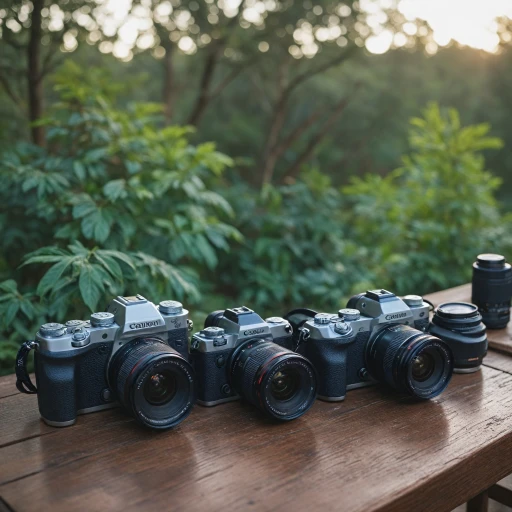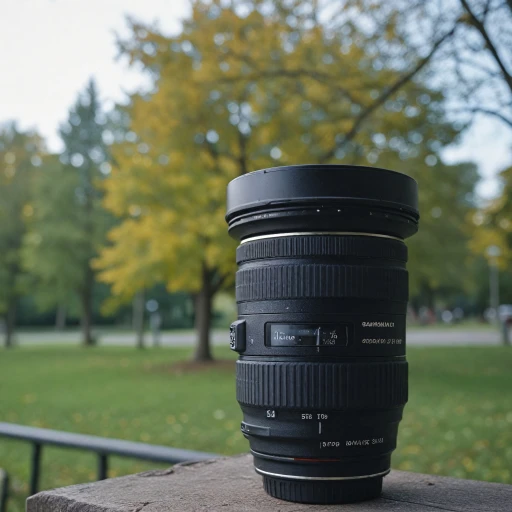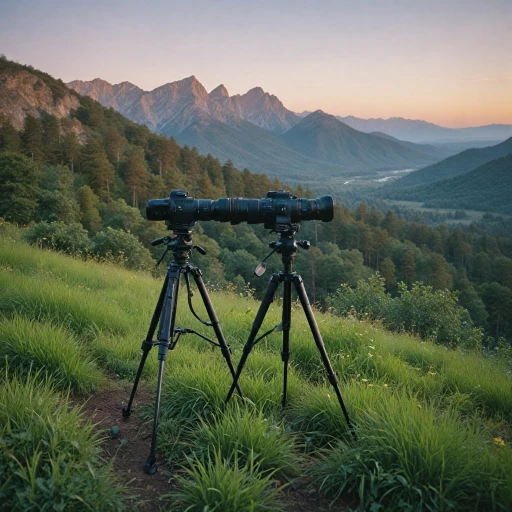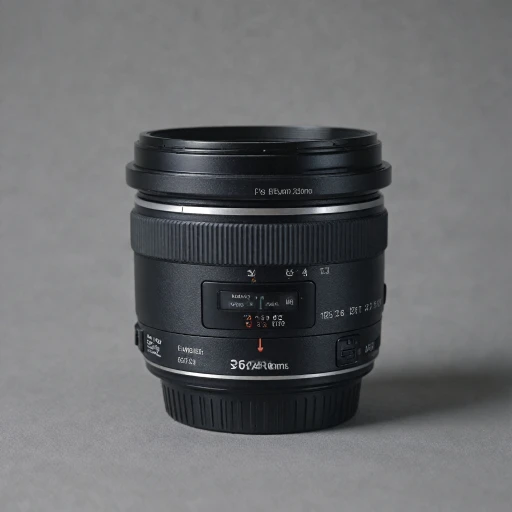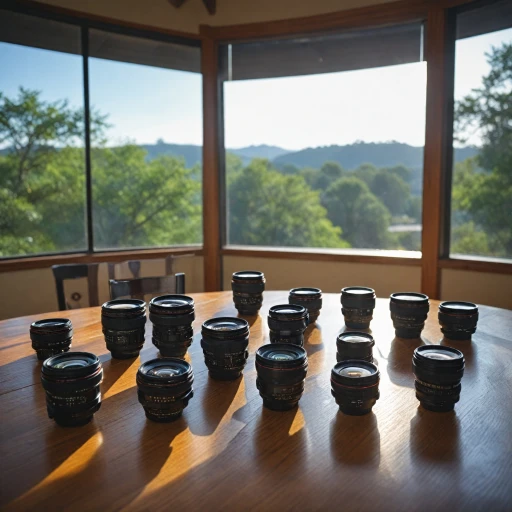
Understanding Canon Lens Types
Diving into Canon Lens Varieties
When venturing into the vast universe of Canon lenses, understanding the diverse types available is critical for any photography enthusiast. Canon offers a broad spectrum of lenses that cater to various photography needs and preferences. This knowledge not only enhances your photography skills but also aids in making informed purchasing decisions when shopping for cameras lenses.Canon lenses can be primarily categorized into two primary types:
- Prime Lenses: These are fixed focal length lenses known for their sharpness and clarity. Prime lenses are an excellent choice for photographers seeking superior image quality without the need to zoom.
- Zoom Lenses: Offering flexibility, zoom lenses allow photographers to adjust the focal length, capturing a range of perspectives. Ideal for dynamic shooting environments where you may want to quickly switch from wide angle to close-up shots.
Mirrorless vs. DSLR Lenses
Canon's wide array of lenses extends to both mirrorless and DSLR cameras. Understanding the differences between them is crucial when selecting lenses that best fit your camera body, be it the advanced EOS series or other models.DSLR Lenses: Designed for DSLR cameras, these lenses provide diverse options suitable for both amateur and professional photographers seeking quality and durability.
Mirrorless Lenses: Compact and lightweight, these are crafted for mirrorless cameras. They are often praised for offering high precision and speed in auto focus capabilities, fitting well with the latest technological trends.
Choosing the Right Focal Length
When choosing the right lens, focal length is a key feature to consider. Whether you're opting for a telephoto lens for distant subjects or an ultra wide lens for expansive scenes, understanding the implications of focal length will guide your decision.Delve deeper into the Canon lens offerings to discover the perfect fit for your style and level of photography expertise. From telephoto lenses ideal for wildlife photography to wide angle lenses perfect for capturing landscapes, the range is vast yet streamlined to meet various artistic goals.
Key Features to Consider in a Canon Lens
Essential Features to Evaluate in Canon Lenses
When diving into the world of Canon lenses, understanding the key features that differentiate one lens from another is crucial. Whether you're a seasoned photographer or just starting, knowing what to look for can help you make informed decisions and enhance your photography experience.
Focal Length and Angle of View
The focal length of a lens determines its angle of view and magnification. Canon offers a wide range of options, from ultra wide angle lenses for expansive landscapes to telephoto lenses for capturing distant subjects. Prime lenses, with a fixed focal length, are often praised for their sharpness and quality, while zoom lenses provide flexibility, allowing you to adjust the focal length as needed.
Aperture and Depth of Field
The aperture of a lens, indicated by its f-stop number, affects the depth of field and the amount of light entering the camera. A lens with a wide aperture (like f/1.8 or f/2.8) is ideal for low-light conditions and creating a beautiful background blur, known as bokeh. This feature is particularly important for portrait photography, where isolating the subject is often desired.
Image Stabilization and Auto Focus
Image stabilization is a feature that helps reduce blur caused by camera shake, especially useful in low-light situations or when using a telephoto lens. Canon's USM (Ultra Sonic Motor) technology offers fast and quiet auto focus, which is beneficial for both photography and videography. These features can significantly impact the quality of your images, making them sharper and more professional-looking.
Compatibility with Camera Bodies
When selecting a Canon lens, ensure it is compatible with your camera body. Canon's EOS series cameras, including both DSLR and mirrorless options, have specific lens mounts. Full frame cameras require lenses that can cover the larger sensor size, while APS-C cameras can use both full frame and crop sensor lenses, often at a reduced price.
Build Quality and Weather Sealing
The build quality of a lens can affect its durability and performance in various conditions. Lenses with weather sealing are designed to withstand dust and moisture, making them ideal for outdoor photography. Investing in a well-built lens can save you from potential damage and repair costs in the long run.
For more insights into the versatility of Canon lenses, you might find this exploration of the Canon 35mm lens helpful.
Comparing Canon Lenses for Different Photography Styles
Evaluating Lens Options for Various Photographic Endeavors
When diving into the world of Canon DSLR and mirrorless cameras, understanding the compatibility and versatility of Canon lenses is crucial. Each lens serves a unique purpose, enriching your creative toolkit and expanding your photographic capabilities. Whether you're capturing landscapes, portraits, or wildlife, there is a Canon lens specifically designed to meet your needs.
Landscapes and Architectural Photography
Wide angle lenses are indispensable for capturing expansive scenes and intricate architectural details. These lenses, with their broader viewing angles, allow you to fit more into your frame without stepping back. For those using EOS series cameras, Canon offers a range of wide angle and ultra wide options perfectly suited for capturing breathtaking vistas. With wider angles, you can achieve dramatic perspectives and immersive images that envelop the viewer.
Portraits and Lifestyle Photography
Prime lenses are often the go-to choice for capturing stunning portraits with impressive depth of field and bokeh effects. Canon's range of prime lenses, whether for a full frame camera or a more compact mirrorless series, delivers sharp images with precise focus and beautifully blurred backgrounds. This makes them ideal for isolating subjects and highlighting intricate details in portrait photography.
Action and Wildlife Photography
For those who revel in capturing fleeting moments or photographing subjects from a distance, telephoto lenses are a must-have in your collection. Canon's telephoto options enable photographers to "zoom in" without physically moving closer to their subjects, ensuring clarity and focus from afar. Whether you are capturing the action at a sports event or wildlife in its natural habitat, Canon's telephoto lenses provide the reach you need while maintaining quality images across various price points.
By diversifying your lens collection based on your photography style, you enhance your ability to portray different narratives through your camera. Exploring different lens types and photography accessories, like selecting the right RRS tripod, can significantly elevate the quality and versatility of your work. From zoom lenses perfect for dynamic compositions to fixed focal lengths that deliver unparalleled sharpness, Canon offers something for every photographer looking to save time and effort in achieving the best shots possible.
The Role of Canon Lenses in Image Quality
Enhancing Image Quality with Canon Lens Selection
When eyeing a Canon lens, it's essential to consider how the choice will affect your camera's image quality. Often, photographers overlook the difference a lens can make, focusing instead on camera bodies like EOS series cameras. Yet, it's the lens that plays a pivotal role in capturing those crisp, striking images you're after.- Prime vs. Zoom Lenses: Prime lenses, known for their fixed focal lengths, often deliver sharper images with wider apertures compared to zoom lenses. This can result in better performance in low light, making them ideal for events or indoor settings. For instance, a Canon USM prime lens can offer that extra edge in portrait photography, delivering high-quality bokeh effects.
- Wide Angle to Telephoto Options: The angle lenses you choose can also determine the scope of your imagery. Ultra wide-angle lenses, for example, are perfect for landscape photography, capturing vast scenes in full frame. On the other end, telephoto lenses let you zoom in on distant subjects, making them indispensable for wildlife or sports photography.
- Quality of Glass: Not all lenses are created equal in terms of the glass used. High-quality lenses often employ advanced coatings that reduce glare and chromatic aberrations, crucial for vivid color reproduction. Investing in quality lenses could save you from spending more on post-processing software.
- Auto Focus Capabilities: The speed and accuracy of auto focus can significantly impact your photography. Canon lenses featuring advanced auto focus mechanisms ensure sharp, in-focus shots, even when capturing fast-moving subjects.
Budget-Friendly Canon Lens Options
Affordable Options for Every Budget
For photography enthusiasts and professionals alike, selecting the right Canon lens often involves balancing performance and affordability. Fortunately, Canon offers a variety of lenses that cater to various photography needs without breaking the bank.- Canon EF 50mm f/1.8 STM - Dubbed as the "nifty fifty," this prime lens is a favorite among beginners and seasoned photographers due to its wide aperture and sharp image quality. It's ideal for portraits and low light photography and is priced attractively.
- Canon EF-S 24mm f/2.8 STM - This is a classic pancake lens for those using crop-sensor DSLRs. It's compact, making it perfect for travel or street photography, while its affordable price makes it a great starting point for those looking to explore wide-angle compositions.
- Canon EF-S 55-250mm f/4-5.6 IS STM - An economical telephoto zoom lens, perfect for wildlife and sports photography. It offers image stabilization, an essential feature for sharp images, and comes at a price that leaves room for other gear investments.
- Canon RF 35mm f/1.8 Macro IS STM - For those using mirrorless systems, this lens offers versatility, allowing you to shoot wide-angle landscapes and macro shots. It comes with image stabilization and makes use of Canon's innovative RF mount technology.
Maintaining and Caring for Your Canon Lens
Prolonging the Lifespan of Your Canon Lens
Taking care of your Canon lens is crucial to ensure it delivers top-notch performance for years to come. Whether you're using a wide-angle lens for sweeping landscapes or a telephoto lens for capturing distant subjects, the right maintenance practices apply to all.- Regular Cleaning: Gently clean your lenses with a microfiber cloth to remove dust or smudges. For more stubborn spots, a lens cleaning solution can be used. Clean lenses enhance image quality, maintaining that sharp clarity you're after in your photography.
- Proper Storage: When not in use, keep your lenses in a dry, dust-free environment. Using lens caps and storing them in padded cases can prevent scratches and other damage. This simple step significantly impacts their longevity.
- Avoid Extreme Conditions: Exposing your lenses to extreme temperatures or humidity can cause damage over time. While the EOS series cameras are built for performance, keeping lenses out of direct sunlight and avoiding prolonged exposure to high moisture levels is advisable.
- Handle with Care: Handle your lens carefully, especially when attaching or removing it from your camera. Mishandling can damage the lens mount or the camera's internal components. This is particularly important for mirrorless lenses and full-frame cameras.
- Check for Firmware Updates: Some Canon lenses, especially those with advanced auto focus systems like the Canon USM, may benefit from periodic firmware updates. These updates can enhance functionality and compatibility with your camera body.
- Use Quality Accessories: Invest in high-quality lens filters, hoods, and mounting accessories. Not only do they protect your lens, but they also ensure optimal performance, particularly with prime lenses and DSLRs.


